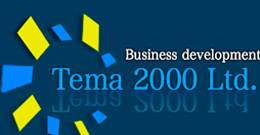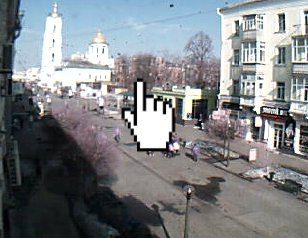Lithuania
Lithuania, officially the Republic of Lithuania (Lithuanian: Lietuvos Respublika), is a country in Northern Europe.One of the three Baltic states, it is situated along the southeastern shore of the Baltic Sea, to the east of Sweden and Denmark. It is bordered by Latvia to the north, Belarus to the east and south, Poland to the south, and Kaliningrad Oblast (a Russian exclave) to the southwest. Lithuania has an estimated population of 3 million as of 2013, and its capital and largest city is Vilnius.
Lithuania is a member of the European Union, the Council of Europe, a full member of the Schengen Agreement and NATO. It is also a member of the Nordic Investment Bank, and part of Nordic-Baltic cooperation of Northern European countries.
Lithuania has been among the fastest growing economies in the European Union and is ranked 24th in the world in the Ease of Doing Business Index. On 1 January 2015, Lithuania adopted the euro as the official currency and became the 19th member of the Eurozone.
The Main Manufacturing Sectors of Lithuania
Energy
The utilities sector accounts for more than 3% of gross value added in Lithuania. Electricity production exceeded 12 billion kWh in 2007, and consumption exceeded 9.6 billion kWh. Surplus electricity is exported.
Lithuania operated a nuclear power plant in Visaginas, which produced 72% of electricity in Lithuania.The plant was shut down on 31 December 2009 in line with the commitments made when Lithuania joined EU in 2004. New nuclear power plant in Visaginas has been proposed but the status of the project is uncertain after it was rejected by the voters in a referendum in 2012.
The supply of heating energy has been modernized during the last decade (1998–2008). Technological loss in the heat energy system has decreased significantly from 26.2% in the year 2000 to 16.7% in 2008. The amount of air pollution was reduced by one-third. The share of renewable energy resources in the total fuel balance for heat production increased to almost 20%.
Chemicals sector
Chemicals and plastics, the two closely related sectors, stand out as some of the best-established industrial activities in Lithuania. The production of main chemicals, fertilizers and primary forms of plastics accounts for over 80 percent of the country’s chemical industry turnover.
Key manufacturers within the sector include Lithuanian companies Achema (a leading manufacturer of nitrogen fertilizers and chemical products in the Baltic States) and Lifosa (a producer of nitrogen-phosphorus fertilizer), and foreign-capital companies Neo Group and Orion Global Pet (makers of PET raisin, based in the seaport city Klaipėda). The chemical and plastics sector employs over 5,400 people; It has received more than EUR 89 million of foreign direct investment – around 2.63 percent of the total FDI in manufacturing.
The companies working in the Lithuanian plastics sector utilize modern technologies and thus are able to serve the needs of various markets. Putokšnis, Stigma, Plasta and Artilux are some of the leading, export-oriented plastics sector’s companies.
Food industry
The food industry is one of the key sectors of Lithuanian’s economy. The food sector produces a major share of the total value created by Lithuanian producers. The most developed food processing subsectors are milk, meat and grain processing. Other well-established sectors are brewing, fish processing, canned vegetables, fruits and confectionery. Over 600 companies operate in the food processing industry in Lithuania. In 2011, 43.6% of total food production and 16% of total beverages production were exported.
The leading companies in the food sector include Vičiūnai Group, Pieno Žvaigždės, Rokiškio Sūris, Kauno Grūdai, Žemaitijos Pienas, Švyturys-Utenos Alus, Marijampolės Pieno Konservai, Norvelita and Biovela.
Transport
Lithuania forms part of the transport corridor between the East and the West. The volume of goods transported by road transport has increased fivefold since 1996. The total length of roadways is more than 80,000 km, and 90% of them are paved.
The government spending on road infrastructure exceeded LTL 1.75 billion (EUR 0.5 billion) in 2008. Via Baltica highway passes through Kaunas, while membership in the Schengen Agreement allows for smooth border crossing to Poland and Latvia.
Railway transport in Lithuania provides long-distance passenger and cargo services. Railways carry approximately 50 million tons of cargo and 7 million passengers a year.Direct rail routes link Lithuania with Russia, Belarus, Latvia, Poland, and Germany.
An ice-free seaport of Klaipeda is located in the western part of Lithuania. The port is an important regional transport hub connecting the sea, land and railway routes from east and west. It handles roughly 7,000 ships and 30 million tons of cargo every year, and accepts large-tonnage vessels (dry-cargo vessels up to 70,000 DWT, tankers up to 100,000 DWT and cruise ships up to 270 meters long). The seaport of Klaipėda is able to receive Panamax-type vessels.
There are a few commercial airports; scheduled international services use the facilities at Vilnius, Kaunas, and Palanga.
Agriculture
Despite a decreased share in GDP, the agricultural sector is still important for Lithuania as it employs almost 8% of the work force and supplies materials for the food processing sector. 44.8% of the land is arable.Total crop area was 1.8 million hectares in 2008.Cereals, wheat, and triticale are the most popular production of farms. The number of livestock and poultry has decreased twofold compared to the 1990s. The number of cattle in Lithuania at the beginning of the year 2009 was 770,000, the number of dairy cows was 395,000, and the number of poultry was 9.1 million.
Lithuanian food consumption has evolved; between 1992 and 2008, consumption of vegetables increased by 30% to 86 kg per capita, and consumption of meat and its products increased by 23% during the same period to 81 kg per capita.On the other hand, consumption of milk and dairy products has decreased to 268 kg per capita by 21%, and the consumption of bread and grain products decreased to 114 kg per capita by 19% as well.


